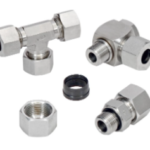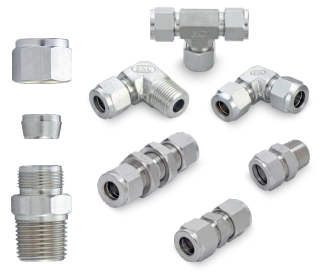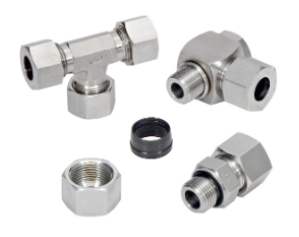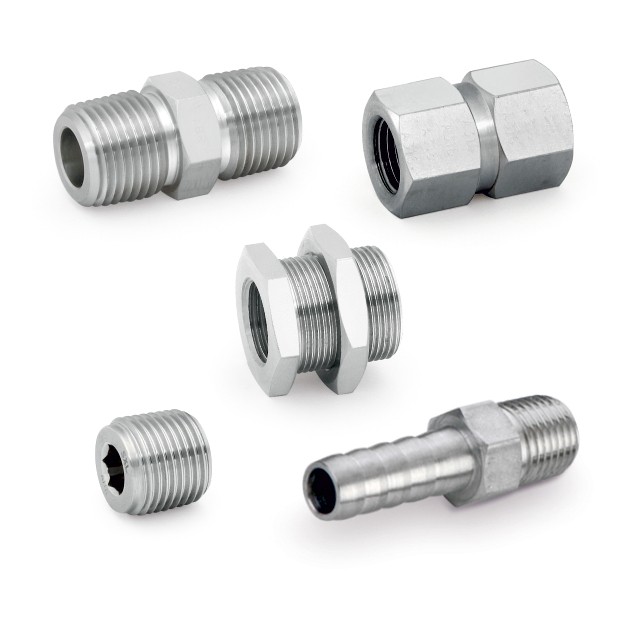
Pipe Fittings for Plumbing: The Present Situation
January 27, 2025Ever feel lost in the maze of pipes and connectors at the hardware store? You’re not alone! Understanding types of pipe fittings can seem like a secret language. But don’t worry; this simple guide will break down the essentials, turning you into a confident plumbing part picker!
Think of types of pipe fittings as the vital links in your plumbing system. They connect pipes, change direction, control flow, and close off lines. Without them, your pipes would be useless. Let’s explore these crucial components in a way that’s easy to grasp and maybe even a little interesting!
The Main Types of Pipe Fittings
To keep things clear, we can group types of pipe fittings by what they primarily do:
-
Changing Direction:
Just like roads need turns, pipes often need to change direction. Here are the key players:
- Elbows: The most common types of pipe fittings for changing direction. They come in 90-degree and 45-degree angles. Street elbows have one male and one female end for tight spots.
- Bends: Similar to elbows but with a gentler curve, reducing friction, especially in larger pipes.
-
Joining Pipes:
Connecting straight pipe lengths is essential. Here are the go-to types of pipe fittings:
- Couplings: Simple fittings with two female ends to join two male-ended pipes of the same size for a secure connection.
- Nipples: Short pipe pieces with male threads on both ends, used to connect female fittings or extend connections.
- Unions: Designed for easy disconnection without moving surrounding pipes. They have three parts: two threaded ends and a connecting nut, which is great for maintenance.
-
Adjusting Pipe Size:
Sometimes you need to connect pipes of different sizes. These fittings make it happen:
- Reducers: Fittings with different-sized openings to connect larger to smaller pipes. They can be centred (concentric) or offset (eccentric).
- Bushings: Fit inside a larger fitting to reduce its opening, offering a compact size change.
-
Creating Branches:
To supply multiple fixtures, you need to split the main line using these types of pipe fittings:
- Tees: “T”-shaped fittings with a main run and a 90-degree branch for creating a single offshoot.
- Wyes (Y-Fittings): Similar to tees but with a 45-degree branch for smoother flow, often used in drainage.
-
Closing Pipe Ends:
When you need to seal off a pipe, these types of pipe fittings are your solution:
- Caps: Female-threaded fittings to close male-threaded pipe ends with a watertight seal.
- Plugs: Male-threaded fittings to close female-threaded fitting ends.
-
Specialised Fittings:
Beyond the basics, some types of pipe fittings have specific uses:
- Flanges: Used for large pipes and high pressure, consisting of bolted discs with a gasket for a tight seal.
- Valves: Control flow (gate, ball, check, etc.) and are often grouped with fittings.
- Couplings with Stop: Have an internal ridge to ensure proper pipe insertion depth.
- Compression Fittings: Seal by compressing a metal ring (ferrule) onto the pipe as a nut is tightened, often for copper and plastic tubing.
Choosing the Right Material
The material of the fitting is as important as its type. Different materials offer different benefits:
- PVC (Polyvinyl Chloride): Affordable plastic for drainage (DWV) and some cold water. Joined with primer and cement.
- CPVC (Chlorinated Polyvinyl Chloride): Like PVC but handles higher temperatures, suitable for hot and cold water. Also cemented.
- Copper: Durable and corrosion-resistant for water supply. Joined by soldering or brazing.
- PEX (Cross-linked Polyethylene): Flexible plastic for water supply. Uses crimp, expansion, or push-fit fittings.
- Brass: Strong and corrosion-resistant for valves and threaded fittings.
- Steel (Galvanised and Black Iron): For gas lines and older water systems. Typically threaded.
- Stainless Steel: Highly corrosion-resistant for demanding applications. Can be threaded, welded, or compressed.
Understanding Connection Methods
How a fitting attaches to a pipe is another key consideration:
- Threaded: Male or female threads that screw together.
- Socket Weld: Pipe inserted into a recessed fitting and welded (for steel).
- Butt Weld: Pipe and fitting ends are bevelled and welded together (for steel).
- Soldered/Brazed: Heating and applying solder or brazing alloy (for copper).
- Solvent Cemented: Primer and cement chemically fuse PVC and CPVC.
- Compression: Nut and ferrule create a mechanical seal.
- Push-Fit: Easy, tool-free connections with an internal O-ring and grip.
- Flanged: Bolted discs with a gasket for large pipes.
Becoming a Plumbing Part Pro
With this knowledge of types of pipe fittings, materials, and connections, the plumbing aisle will feel less like a puzzle. Remember:
- Know the job: What do you need the fitting to do?
- Match the materials: Ensure compatibility between pipe and fitting.
- Choose the right connection: Consider your skills and the job requirements.
- Measure carefully: Accuracy is crucial.
Understanding types of pipe fittings is a big step towards handling your own plumbing tasks. While it might seem like a lot, breaking it down makes it much simpler. So, next time you’re faced with a plumbing project, remember this guide and choose your fittings with confidence. Happy fixing!




